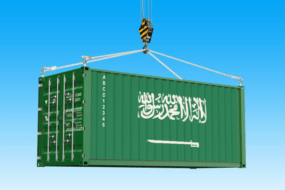- Home
- Trade News
- Global warming to increase whe ...

Crop yields in some countries are likely to increase as a result of global warming, thanks in part to higher carbon dioxide (CO2) levels, which promote plant growth and help plants become more water efficient. Given the current global rise in food prices, the results may appear encouraging.
However, despite higher yields, future global wheat price spikes are expected to be more severe, according to a recent study by an international team of researchers.
They discovered that in a world that is 2 degrees Celsius warmer than pre-industrial times, wheat yields will increase slightly in high-latitude areas such as the United States, northern China, and parts of Australia. The study, led by Professor Zhang Tianyi, an agrometeorologist at the Chinese Academy of Sciences’ Institute of Atmospheric Physics in Beijing, focuses on what may happen to global wheat production as well as global wheat prices. An agrometeorologist studies how weather and climate affect crop and livestock production, as well as soil management.
Prof. Zhang’s team examined not only predicted wheat yields in a 2 degree Celsius world, but also the effect of climate change on wheat prices and the global wheat market. For example, which countries would benefit from higher yields and which would suffer from lower yields and become more reliant on imports? The researchers discovered that higher CO2 levels would result in a 1.7% increase in global mean yield under 2 degrees Celsius warming compared to the current climate. Prof. Zhang explained that this translates to increased grain output per hectare.
High temperatures reduce wheat yields, but higher CO2 levels can compensate, according to the authors of a study published in the journal One Earth. Photosynthesis requires CO2 for plants to produce sugars. More CO2 tends to boost plant productivity, at least to a point, according to the researchers.
However, the authors discovered that increases in global yield do not always result in lower consumer prices. According to computer modelling results, global wheat price spikes will become higher and more frequent. This is due to the fact that wheat yields are expected to rise in high-latitude wheat exporting countries while falling in low-latitude wheat importing countries like India and parts of Africa, including Egypt. This would result in higher prices in importing countries.
According to Prof Zhang’s team’s findings, a 2 degree Celsius world would result in increased international demand for wheat and higher consumer prices in importing countries. The team divided the world into 51 socioeconomic regions to calculate the results, which included not only the major wheat-producing countries, but also the important exporting and importing countries on each continent.
Prof Zhang explained that the team used complex computer models to simulate a large number of wheat-growing seasons that mimicked all combinations of climate stresses at current climate conditions as well as a 2 degree Celsius warmer climate. These two climate ensembles’ data were then fed into separate wheat yield and economic models.
Prof Zhang told The Straits Times that the results “suggest that increased self-sufficiency is key for staple food-importing countries under future climate change stresses and trade regimes. Several policies, including increased arable land, agricultural restructuring, and increased grain stocks, will help these countries improve their food security “.
Trade liberalisation policies must be carefully considered. Warmer temperatures may stabilise or even improve farmer income in wheat-exporting countries, but decrease farmer income in wheat-importing countries. Other recent research has looked at ways to increase wheat yields in a hotter future. Shifting to earlier crop sowing windows, breeding varieties for enhanced drought and heat tolerance, and CO2 fertilisation can improve yields and resilience in Australia, the world’s sixth-largest grain exporter in 2020. Frost damage is also reduced in a warmer world.
Dr. Pep Canadell, executive director of the Global Carbon Project, who was not involved in the wheat study, told ST: “All computer models, such as crop models, forest models, and so on, have a strong CO2 fertilisation effect.” As a result, we expect – and have seen – higher crop yields as a result of CO2 alone. Warming in high latitudes can also increase crop yields, but globally, warming has a negative effect that partially offsets the positive effects of CO2.”
The Global Carbon Project is an international scientific collaboration that studies global carbon trends ranging from fossil fuel emissions to natural CO2 absorption. “Wheat yield in Australia has remained relatively stable on average. This is due to advances in wheat cropping and varieties offsetting what would have been a yield decline due to climate change. This can be interpreted as having to run to stay in the same place “Dr. Canadell explained.
To find out more about accessing a new market, you can check out this article which teaches you how to use Trade Data Pro to access Turkey markets: https://blog.tradedata.pro/why-you-should-be-importing-from-turkey-in-2022/
The most trustable and reliable source for Trade Data.
Trade Data Pro is proudly made in Singapore. Singapore has been one of the world’s most politically stable countries, with an open and trade-driven economy. Trade Data Pro is presented by CIC, a government-linked company in Singapore CIC is a Join Venture of Zall Smartcom, SGX and GeTS.) Since the launch of Trade Data Pro in 2018, Trade Data Pro has received overwhelmingly positive remarks from market. This is because Trade Data Pro has wide coverage, low cost, and fast response. There are many leading companies from different industries that have subscribed to Trade Data Pro . Trade Data Pro was awarded with Singapore Quality Class in 2020 and Stevie Award Gold in 2021. Businesses need information to reveal trends, identify market opportunities, track competitors buyers and suppliers, and better understand supply chain potential. Finding these critical data has traditionally been challenging. But this information do exist, but as part of government import and export filing requirement. The detailed shipment information which are within these filings constructions the core of the global trade. Trade Data Pro has gathered and packaged these information as business intelligence. Our solution helps companies understand the flow of goods across borders and features the world’s largest searchable trade database. We do the heavy lifting for you by reviewing, standardising, and cleaning data, then delivering in an intuitive format.
Agriculture Business Buyers Climate Change Commodities Crops Drought Environmental Export Exports Global Global Warming Import International Trade Worldwide
Recent Posts
- Saudi Arabia Exports of Crude Oil Go Down As Diesel Rises
- Finest Mangoes and Rare Litchi Now Headlining India Exports to UAE
- Japan Imports and Exports Reeling and Rising From US Tariffs
- Upsurge for Exports of Thailand: Agriculture and Electronics
- Indonesia Exports: Sunny Outlook Despite Coal, US Challenges
Archives
- August 2025
- July 2025
- June 2025
- May 2025
- April 2025
- March 2025
- February 2025
- January 2025
- December 2024
- November 2024
- April 2024
- March 2024
- January 2024
- December 2023
- November 2023
- October 2023
- September 2023
- August 2023
- July 2023
- June 2023
- May 2023
- April 2023
- March 2023
- February 2023
- January 2023
- December 2022
- November 2022
- October 2022
- September 2022
- August 2022
- July 2022
- June 2022
- May 2022
- April 2022
- March 2022
- February 2022
- January 2021
Categories
Recent Post
Saudi Arabia Exports of Crude Oil Go
- August 25, 2025
- 13 min read
Finest Mangoes and Rare Litchi Now Headlining
- August 21, 2025
- 9 min read
Japan Imports and Exports Reeling and Rising
- July 31, 2025
- 15 min read
All Tags
Agriculture Automotive Brazil Business Business Opportunities Buyers China Coffee Commodities Crops Ecommerce Economic Economy Electronics Energy Environmental Europe Export Exports Future Garments Global Import India Industries International Trade Leads Leads Generation manufacturing Markets Opportunities Pharmaceuticals Prices Rice Russia Supplier Textiles Trade Trade Data Trade Data Pro Turkey Ukraine United States Vietnam Worldwide








